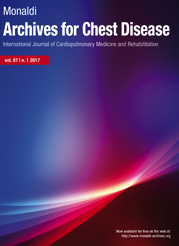Bronchoscopic valve therapy for tuberculosis: a scoping review
All claims expressed in this article are solely those of the authors and do not necessarily represent those of their affiliated organizations, or those of the publisher, the editors and the reviewers. Any product that may be evaluated in this article or claim that may be made by its manufacturer is not guaranteed or endorsed by the publisher.
Authors
The management of tuberculosis (TB) presents significant challenges, particularly in the context of multidrug-resistant TB (MDR-TB) and TB-HIV co-infection. Traditional surgical interventions, such as lung resection and pneumothorax induction, have largely been phased out with the advent of modern antibiotic regimens. However, emerging evidence suggests that endobronchial interventions, specifically the use of unidirectional valves, have potential in supporting the treatment of MDR-TB. The objective of this review is to demonstrate the feasibility of closure of tubercular cavities using endobronchial valves, resulting in improved clinical outcomes and sputum smear conversion. PubMed was searched from inception to September 2024. The small studies reviewed here demonstrate the feasibility of tubercular cavity closure using endobronchial valves, resulting in improved clinical outcomes and sputum smear conversion. Yet, limited access to Food and Drug Administration-approved valves and funding challenges hinders large-scale trials. To address these limitations, further evidence is needed within improved international collaboration. We suggest that international prospective trials and innovation are needed. Such collaborative efforts would clarify the role of valves in TB treatment and hopefully lead to the development of simpler and more affordable occlusive devices that would benefit patients with MDR-TB, particularly in low-income countries.
How to Cite

This work is licensed under a Creative Commons Attribution-NonCommercial 4.0 International License.






